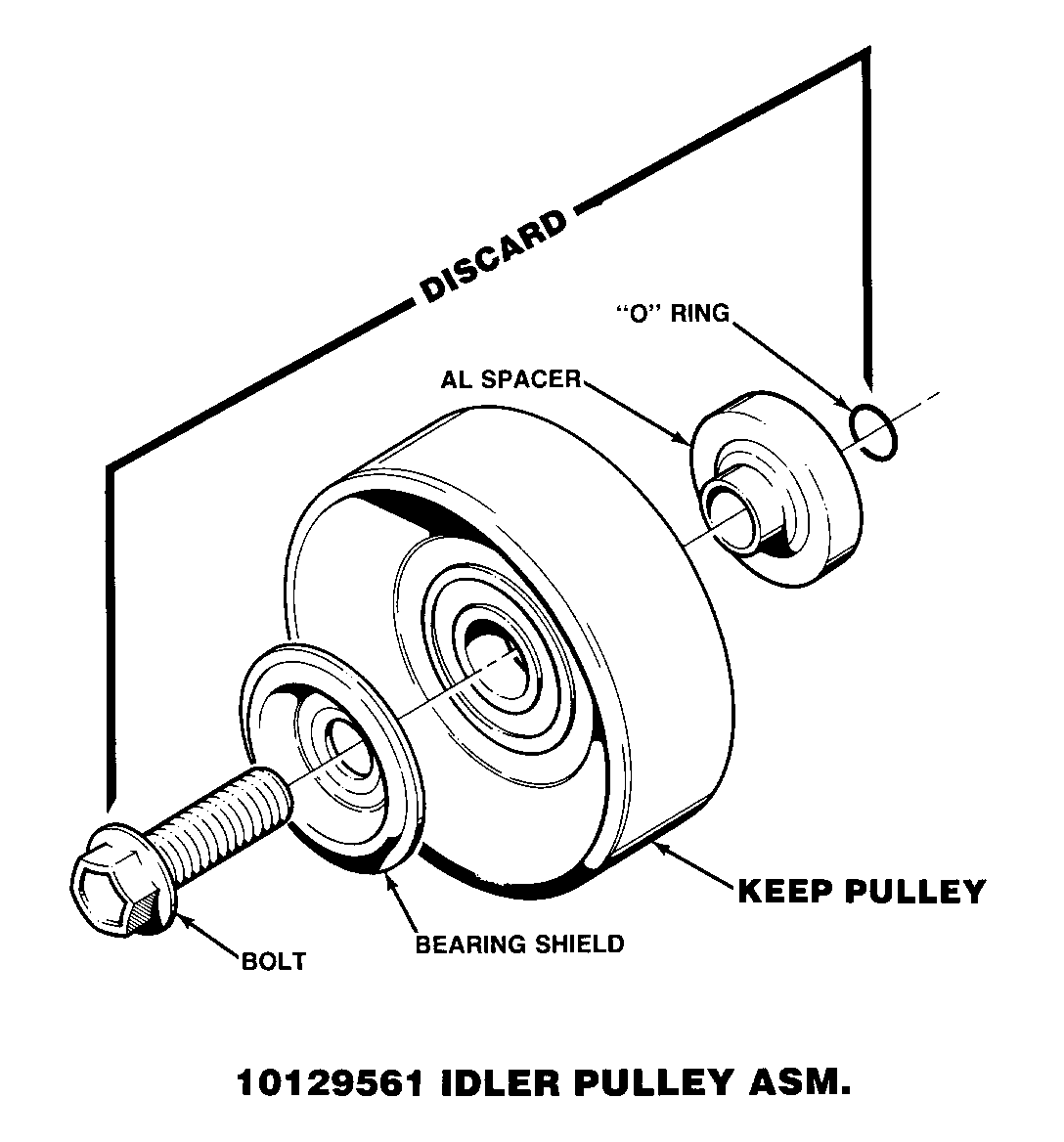SERPENTINE BELT W/WORN IDLER PULLEY OR TENSIONER

Model and Year: 1987-89 C, K, R, V, S, T TRUCKS AND M, G VANS WITH 4.3L, 5.0L, 5.7L, 7.4L (VIN CODE Z, H, K, N) ENGINES
Some 1987-89 light-duty trucks with 4.3L, 5.0L, 5.7L, and 7.4L engines and equipped with serpentine belt drive may experience a condition where the belt becomes loose and squeals or the belt may come off the engine drive pulleys. This condition may be caused by a worn idler and/or worn belt tensioner pulley (plastic).
If this condition exists, the following procedures may be used to repair this condition:
IDLER PULLEY ONLY:
1. Using procedures in Section 6B-Engine Cooling, remove and discard the serpentine belt.
2. On trucks with 4.3L, 5.0L, and 5.7L engines, replace the existing idler pulley with a new metal pulley, P/N 10129560.
On trucks with 7.4L engines, replace the existing pulley with P/N 10129561.
Parts are expected to be available on October 9, 1989. Until then normal part orders will not be accepted by GMSPO. Only verifiable emergency VIP orders will be accepted. SPO will make every effort to obtain parts. All parts will be placed on 400 control to waive VIP surcharges. However, the part will be shipped premium transportation at dealer's expense. All other order types will be canceled as incorrectly ordered while the 400 control is in place.
3. Install new serpentine belt.
DRIVE BELT TENSIONER PULLEY ONLY:
1. Using procedures in 6B-Engine Cooling, remove and discard the serpentine belt.
2. On trucks with 4.3L, 5.0L, 5.7L and 7.4L engines, using metal pulley (P/N 10129561) perform the following steps:
A. Remove O-ring, aluminum spacer, bolt, and metal bearing shield and discard (see illustration).
B. Retain the metal pulley.
3. With tensioner on engine, remove worn tensioner pulley, bolt, and metal bearing shield. Discard pulley and retain bolt and shield for reassembly.
IMPORTANT: 4.3L, 5.0L, and 5.7L bolt have left-hand threads.
7.4L bolt has right-hand threads.
4. Install new metal pulley and the original shield and bolt on the tensioner.
5. Install new serpentine belt.
Labor Operation Number: T-7960.
Labor Time: .3 hr. to replace idler pulley. .1 hr. to rework tensioner pulley.

General Motors bulletins are intended for use by professional technicians, not a "do-it-yourselfer". They are written to inform those technicians of conditions that may occur on some vehicles, or to provide information that could assist in the proper service of a vehicle. Properly trained technicians have the equipment, tools, safety instructions and know-how to do a job properly and safely. If a condition is described, do not assume that the bulletin applies to your vehicle, or that your vehicle will have that condition. See a General Motors dealer servicing your brand of General Motors vehicle for information on whether your vehicle may benefit from the information.
